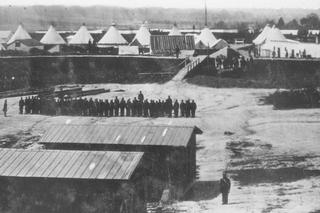Montgomery Meigs
|
Montgomery Meigs
|
Montgomery Meigs (1816-1892) graduated from West Point in 1836 and joined the Army engineer corps. He was significant as an example of the modernizing North and the transportation revolution. From 1852 to 1860 he supervised the construction of the Washington Aqueduct that carried a large part of the water supply from the Great Falls of the Potomac to the city of Washington. He designed the monumental bridge across Cabin John Branch. In 1853 he began the building of the wings and dome of the national Capitol (see article), and the extension of the General Post Office building, and built Fort Madison in Annapolis.
|
Washington Aqueduct
|
|
wagons on Peninsula
|
|
soldiers on Peninsula
|
|
U. S. photographer
|
Sources:
- Lincoln & His Quartermaster General. The Story of Montgomery Cunningham Meigs, by Lt. Col. Herbert A. Hall Q.M.C., from the Quartermaster Review, May-June 1950
- Montgomery C. Meigs Master of Efficiency from Fort Ward Museum, Alexandria VA
- Brigadier General Montgomery C. Meigs 14th Quartermaster General from Army Quartermaster Foundation and Army Quartermaster Museum at Fort Lee, VA
- Montgomery C. Meigs and the Building of the Nation's Capital, book review from H-Net
- Selected Civil War Photographs from American Memory
- "Capitol Dome Gets Facelift" from AP and Capitol Architect, Feb. 28, 2000 - article
revised 3/22/06 by Schoenherr | Civil War
